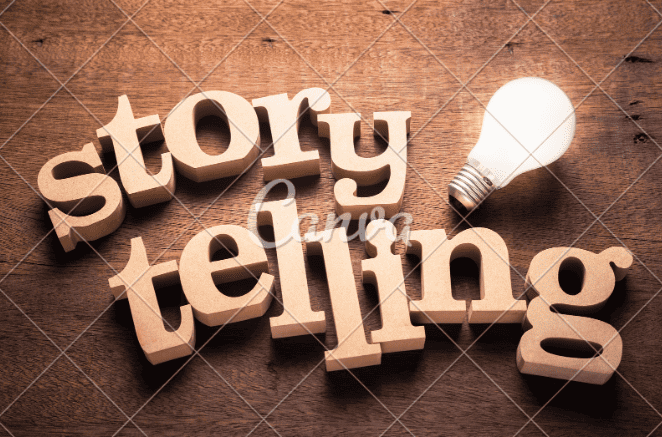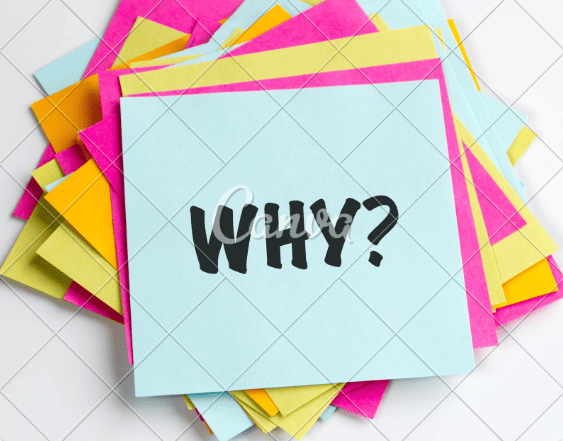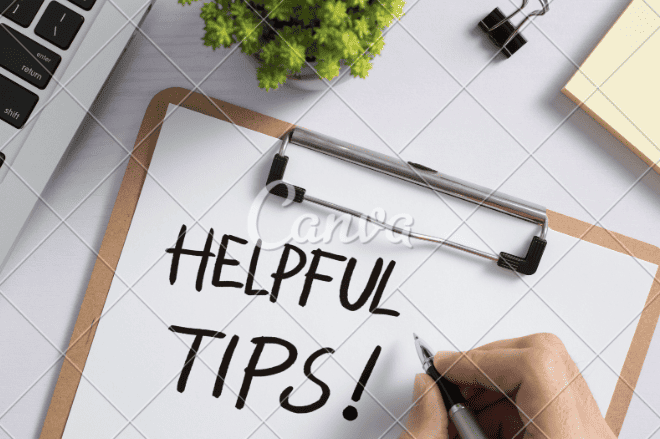The Power of Visual Storytelling: How to Increase Audience Engagement

Introduction
Visual storytelling isn’t new. But in the digital age, it’s been reborn. It’s more powerful, more impactful. Visuals are no longer just images. They are stories, emotions, connections.
We live in a world where content is king. But not just any content. Visuals rule this kingdom. They are quick. They are impactful. In a split second, a visual can tell a story, evoke an emotion, and make a connection.
Here’s the deal. The digital landscape is crowded. Text is everywhere. But visuals? They stand out. They pop. In the chaos of content, visuals are the calm. They grab attention. They hold it.
Storytelling has morphed. It’s become visual. A single image or a short video can say what a thousand words sometimes can’t. It’s instant. It’s powerful. It’s a language that needs no translation. It’s universal.
Now, here’s where it gets interesting for the market. Brands are catching on. They’re not just selling products. They’re telling visual stories. They’re crafting narratives that resonate, that linger, that stick. It’s content, but it’s more. It’s an experience. Visual.
In the battle for attention, visual storytelling is the weapon of choice. It’s not about shouting the loudest. It’s about being seen, being remembered. It’s about crafting content that doesn’t just inform but transforms. Every image, every visual is a chapter of a story that’s not just seen but felt. In the world of digital marketing, that’s gold.
The Dominance of Visual Media in Modern Communication
Visual media is booming. Think about platforms like Instagram, TikTok, and YouTube. They have changed the game. It’s all about images, videos, and visuals that grab our attention.
Content isn’t just words anymore. The market is alive with pictures, videos, GIFs, and more. Our feeds are colorful, vibrant, and dynamic. We want to see stories, not just read them. In this shift, attention has become the golden ticket. There’s so much content out there. How do you stand out? Visuals.
Visual media does the job. It’s quick, it’s catchy. You see an image or a clip, and you’re hooked. That’s the power of visual content. It doesn’t just inform. It entertains, it engages, it connects.
People love it. You can tell a whole story in a snapshot or a short video. Brands know this. The market is adapting and evolving. It’s becoming more visual by the day. We want our information to be fast and engaging and visual media deliver.
Content isn’t just about information. It’s about grabbing attention and holding onto it. Visuals make that happen. A striking image or compelling video cuts through in a world filled with noise. It speaks. It resonates. It sticks.
In the end, it’s a visual world. Content that’s seen, that’s shared, that’s loved—it’s visible. The rise of optical media platforms isn’t just a trend. It’s a revolution. The way we consume, create, and share content is changing. And visuals? They’re leading the way.
Why Does Visual Storytelling Engage the Audience More?

The Science Behind It
Our brains love visuals. Why? We’re wired that way. We process images faster than text. Way faster. It’s science. Visuals hit the brain and boom – we get it. Instant connection.
Most of us are visual learners. We see, we understand, we remember. Pictures stick, words sometimes slip. It’s not a bad thing, it’s a brain thing.
Visuals boost audience engagement. They make complex simple, boring interesting. They grab us, hold us, and don’t let go. In a world of words, pictures pop. They speak a language without borders, breaking through where text can’t.
In a nutshell, visuals win because our brains say so.
Emotional Connection
Visuals hit differently. They reach in and touch the heart. It’s all about the emotional connection. A powerful image tells a story. A story that words alone don’t know. That’s the magic of visual storytelling.
Audiences feel it. A stunning visual takes you on a journey of emotions. You’re not just seeing it; you’re feeling it. It’s intimate. It’s personal.
An image can make you laugh, cry, or ponder. It’s an instant and deep bond between the content and the audience. In the realm of visual media, emotions aren’t just viewed. They’re lived. Every visual tells a story, an emotional tale that stays, resonates, and echoes.
Universal Language
Visuals speak to everyone. It’s a universal language. You see an image and boom, and you get it. No words are needed. Visuals cross borders and cultures, breaking through where words can’t.
Content communication gets a lift with visuals. It’s instant. It’s powerful. A picture, a video – they connect with everyone. Anywhere, any time. It’s a conversation without barriers.
Visuals are the great equalizer. Rich, poor, young, old – everyone understands. It’s like a bridge connecting diverse worlds, speaking a language we know. In a world divided by languages, visuals unite. They’re not just seen. They’re felt, understood, and embraced by all.
Key Components of Effective Visual Storytelling

Visual storytelling isn’t just about slapping pictures onto text. It’s an art. It’s a dance of elements that brings a narrative to life. Here’s the breakdown.
First up, images. They’re the heart of visual storytelling efforts. But not just any photos. We’re talking powerful, striking visuals that grab you and don’t let go. Every image is a story. A moment. It’s got to speak, sing, shout.
But wait, there’s more. Layout matters. It’s like the stage for your visual elements. Where images sit, how they’re framed, the spaces around them—they all play a part. It’s about the look and the feel. Every corner, every edge adds to the story.
Now, colors—they’re the soul. Each shade, each hue, tells a piece of the tale. Bright, dark, warm, cool—they stir emotions. They’re the silent voice of every narrative.
Words still have a role. They’re the thread that weaves through the visual elements. Words give context depth. They turn images from moments into epics. Each caption and each headline is a chapter of the journey.
Animation can’t be forgotten. Movement brings energy. It turns static into dynamic. Animations are the pulse that keeps eyes glued.
All these elements—they’re players on the stage of visual storytelling. Alone, they’re potent. Together, they’re explosive. Every image, every color, every word—they build layers. Depth. They turn content from information to experience.
A narrative isn’t just told. In the hands of visual storytelling, it’s felt. It’s lived. Every element is a brushstroke. And the final picture? It is a masterpiece of engagement, connection, and unforgettable journeys. Every piece, every part, working in harmony—that’s the magic of visual storytelling. It’s not just seen. It’s remembered.
Techniques to Boost Engagement with Visual Storytelling
Use of Infographics
Infographics are game changers. Complex data turns simple. It’s a visual representation at its best. Numbers become shapes and colors. Hard facts depend quickly on the eyes.
People love it. Its engagement is skyrocketing. A well-crafted infographic tells the story. No fluff, just facts. Clear, concise, and catchy.
In a sea of data, infographics stand out. They make learning fun reading a breeze. Every chart every icon pulls you in. It’s information, transformation, and visual celebration rolled into one.
Animated GIFs and Videos
Animated GIFs are eye candy. They move, they dance, they pop. In the world of visual content, they’re stars. Why? Motion catches the eye. It’s alive. It’s dynamic.
Attention loves motion. Eyes are drawn to it. In a scroll, a swipe, a glance, animated GIFs stand out. They pause the scroll. They make you look, laugh, think.
It’s visual content but with a pulse, a rhythm. It’s the magic mix of motion and emotion. GIFs aren’t just seen. They’re felt.
Interactive Visuals
Interactive visuals are the future. In the world of content marketing strategy, they’re gold. They pull people in. It’s engagement on steroids.
People don’t just see; they do. Click, swipe, play. The content becomes an experience. It’s alive.
Interactive visuals make stories stick. They make messages move. In the noise, they are the signal, loud and clear. It’s marketing, but it feels like playing. And in that space, messages aren’t just heard. They’re held remembered.
Narrative Flow
Are you crafting a visual story? It’s all about the flow. The narrative flow is critical. It’s like a river, guiding you from start to finish.
Every image is a chapter. Every scene, a step. But here’s the trick: it needs an exciting story. No one remembers a dull tale.
A good story sticks. It entertains, surprises, moves. With the proper flow and a compelling tale, visuals aren’t just seen. They’re felt, followed, and loved. That’s the power of an excellent visual narrative.
Case Studies: Brands Excelling in Visual Storytelling

Let’s talk about brands that have nailed it in visual storytelling. They know the drill. It’s not just about selling products but telling tales that stick. These brands mastered the art of using visuals to make their mark in the market.
Take Apple. Their strategy is sleek, just like their products. Every image and every ad is a visual masterpiece. Remember the “Shot on iPhone” campaign? Pure genius. It wasn’t just an ad; it was an art gallery. Real photos, real people, real stories. It showed the world the power of a pocket camera. Every shot is a visual storytelling example that screams simplicity and quality.
Now, let’s swing over to Nike. They don’t just sell shoes; they sell dreams. Every campaign is a rush, a pulse. Images that are more than just visuals – they’re heartbeats. Remember the “Just Do It” visuals? Every frame, every shot, is a pump of adrenaline. They tell tales of triumph, power, and determination. In the market, Nike isn’t just a brand; it’s a movement.
Can we forget Coca-Cola? Nope. They’re not just about the fizz but the sizzle, too. Their visual storytelling is as refreshing as their drinks. Every image and every color pops and fizzes with happiness, community, and connection. They’ve turned a brown liquid into a rainbow of experiences. It’s a brand that bubbles over with visual stories that make you feel the fizz.
Then there’s Airbnb. Their visuals aren’t just about places but faces too. Real people, real homes, real stories. Every image invites you into a world where every stay is a story. Their “Live There” campaign? A visual tour de force. It turned travelers into storytellers. In the world of brands, Airbnb is a journey, not just a stay.
In essence, these brands have turned visual storytelling into a fine art. It’s not about products on shelves but stories in hearts. Their strategies are visual sonnets that make the market not just a place of buying and selling but of feeling and experiencing.
These brands don’t just occupy market space; they inhabit mind and soul spaces. Every campaign, every visual, is a thread woven into the fabric of their audience’s lives. They prove that in the world of the market, stories told visually aren’t just seen but remembered and lived.
Practical Tips for Integrating Visual Storytelling into Your Strategy

Are you creating your own visual stories? It’s not magic, but it’s close. Every business can paint pictures that stick, and here’s the how-to.
Step one is to know your audience. What do they like? What do they feel? Base your visual storytelling strategy around them. Tailor your content. Make it a mirror that reflects their lives and their desires.
Next, choose your visuals wisely. Every image and every video should be a chapter of the tale. It’s about quality, not quantity. Less is more. Make every visual count. It should speak, sing, shout.
Now, weave in emotions. This is key. People remember what they feel. Make your content a rollercoaster of emotions. Joy, surprise, curiosity – mix it up. Make hearts beat faster. Make eyes widen. That’s the sweet spot.
Consistency is your friend. Your visuals should be different but also the same. It sounds like a riddle, but it’s not. Every visual story should be a piece of the puzzle. They should fit. In the world of content, harmony is king. Your marketing strategy should be a symphony of visuals that play the same tune.
Interaction is gold. Don’t just tell; ask. Make your audience part of the story. Involve them. Engagement boosts recall. When they touch, they remember. Make your visual content a two-way street.
Lastly, measure and tweak. Look at the numbers. What worked? What didn’t? Every view, every click, every share tells a story. Listen to it. Your marketing strategy should be fluid, changing, and evolving. The market speaks, and in those whispers are secrets to visual storytelling that stick.
Creating your own visual stories isn’t rocket science. It’s about being human. It’s about touching the soul through the eyes. Every business has a visual tale to tell. Find yours. Craft it with care. Unleash it with precision. In the world of marketing, content is king.
But visual content? That’s the ace. Play it well, and watch the magic unfold. Every image and video has a world where your brand isn’t just seen. It’s felt, it’s remembered. It’s loved. Welcome to the visual storytelling revolution. You’re not just a part of it. You’re a creator.
Challenges to Overcome in Visual Storytelling
Visual storytelling isn’t a walk in the park. Visual challenges? They’re real. But like any hurdle, they’re not insurmountable.
The first hiccup is clarity. Sometimes, visuals can muddy the waters. Too flashy, too complex, and boom – the core message gets lost. So, what’s the fix? Simplicity. Keep visuals clean. Make them clear. Each image and video should be a clear voice in a choir, not a noise in a crowd.
Consistency can be another beast. Different visuals and different vibes can lead to a mixed message. The solution? Alignment. Every visual should be a thread woven from the same cloth. They should tell one story and sing one song.
Then there’s relevance. An excellent visual is just a pretty picture if it doesn’t connect. The core message can drift into the void. Anchor it. Make every visual a bridge that links the eye to the heart, the view to the value.
And let’s not forget engagement. A visual that doesn’t pop is a missed shot. Make it interactive. Add a dash of surprise. Turn viewers into participants.
Your strategy should be a map that navigates these visual challenges. Every image, every clip, and every GIF should be a soldier in an army. United, focused, powerful.
The core message is the king. Visuals are the kingdom. Make them serve the crown. When every visual is a servant of the core message, magic happens. Stories aren’t just told; they’re experienced. They’re lived. In the dance of visuals, the core message should lead. Every step, every move, every turn – it’s all about the news. Make it shine, and watch your visual storytelling turn from a whisper into a symphony.
Wrapping Up
Let’s wrap this up. Visual content isn’t just a trend; it’s the heartbeat of modern marketing. The future? It’s bright, colorful, and graphic. It’s a world where stories are told, seen, felt, and experienced.
Visual storytelling works. It’s a fact. A powerful optical stick lingers in the mind and the heart. It’s not just about looking; it’s about feeling. A stunning image, a compelling video – they’re not just content. They’re journeys. Every visual is a door, an invitation to step into a world crafted by stories.
Visual content is magnetic. In a sea of endless content, visuals are the islands that catch the eye. They’re the anchors. People stop, stare, and stay. That’s the power of visuals. They don’t just capture attention; they hold it. They make audiences not just viewers but participants in the storytelling dance.
In the heart of this visual revolution, storytelling is king. Every image, every visual content piece, tells a tale. It’s intimate. It’s personal. It’s a whisper of a brand into the ears of the audience, a touch, a connection that words alone can’t forge.
As we look ahead, the path is clear. Visual storytelling isn’t an option; it’s a necessity. It’s the golden key in the crowded world of content. Brands that master this art won’t just be seen but remembered, cherished, and loved. In the dance of content and commerce, visual storytelling is the rhythm, the pulse, the beat that turns viewers into followers, customers into ambassadors, and content into legacy.



